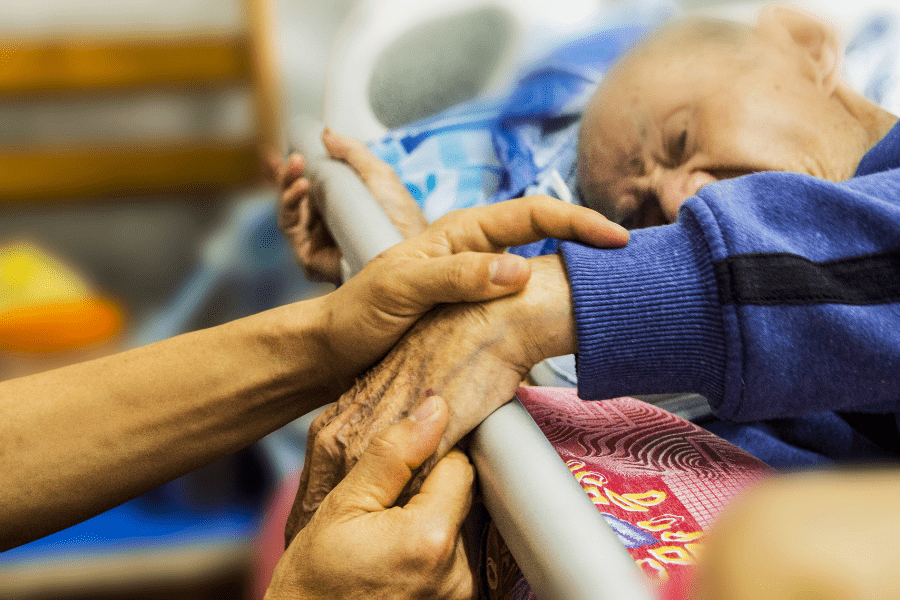
The Persistent Misconception That’s Costing Families Quality Time
When healthcare professionals and families ask, “Isn’t hospice care only for the final days of life?” they’re perpetuating one of the most harmful myths in palliative and end-of-life care. This misconception delays crucial comfort care that could significantly improve quality of life for months, not just days.
The integration of professional home care with hospice care creates an unparalleled support ecosystem that transforms end-of-life experiences for both patients and their families.
The Evidence-Based Reality of Modern Hospice Care
Research consistently shows that hospice patients who receive care for more extended periods experience better pain management, improved family satisfaction, and enhanced overall quality of life. Modern hospice care philosophy centers on comprehensive comfort care that addresses physical, emotional, and spiritual needs—often resulting in patients feeling better and remaining active longer than those focused solely on curative treatments.
Debunking Critical Hospice Care Myths Through Thought Leadership
Myth 1: Hospice Care Equals Abandoning Hope
The Reality: Hospice care redefines hope from cure-focused to comfort-focused outcomes. This shift allows families to concentrate on meaningful connections, legacy conversations, and dignity preservation—elements that often provide more profound satisfaction than continued aggressive treatments.
Myth 2: Hospice Services Replace All Other Healthcare Support
The Clinical Truth: Hospice teams provide exceptional medical oversight, pain management, and emotional support through scheduled visits. However, the gaps between these visits—often 24-48 hours—create opportunities where integrated home care services become essential for continuity of comfort and safety.
Myth 3: Hospice Eligibility Requires Cancer Diagnosis
Medical Facts: Hospice care serves patients with diverse terminal and chronic conditions, including advanced dementia, congestive heart failure, chronic obstructive pulmonary disease (COPD), amyotrophic lateral sclerosis (ALS), and numerous other progressive diseases. Each diagnosis requires specialized care coordination that benefits from integrated service approaches.
The Strategic Integration Model: Home Care + Hospice = Comprehensive Support
The most effective end-of-life care models recognize that hospice medical visits, typically occurring 2-3 times weekly, cannot address all daily living needs. Professional home care services complement hospice care by providing daily living assistance, nutrition management, medication compliance monitoring, symptom observation between hospice visits, companionship care, and family respite.
When hospice and home care services operate as unified teams, research demonstrates reduced emergency room visits, decreased family caregiver stress, improved patient comfort scores, and higher satisfaction rates with end-of-life care.
National Partnership Excellence: Amedisys Hospice Collaboration
Our strategic partnership with Amedisys, a nationally recognized leader in hospice and healthcare services, exemplifies how integrated care delivery can transform end-of-life experiences. As a trusted National Partner of A Place At Home, Amedisys brings:
- Clinical expertise across diverse terminal diagnoses
- 24/7 on-call medical support for urgent comfort needs
- An interdisciplinary team approach, including physicians, nurses, social workers, and chaplains
- Family education and support services throughout the care journey
- Bereavement care extending beyond the patient’s passing
This partnership enables seamless care coordination where families receive both expert clinical oversight and consistent daily support without service gaps or communication breakdowns.
Best Practices for Early Hospice Engagement
Healthcare professionals should consider hospice referrals when prognosis indicates six months or less, repeated hospitalizations occur for the same chronic condition, or patients express a desire to focus on comfort rather than cure.
Professional home care services facilitate smoother hospice transitions by providing familiar caregivers during adjustment periods, maintaining established daily routines, and ensuring continuity during hospice team changes.
Implementing Integrated Care Solutions
For healthcare professionals seeking to improve end-of-life care outcomes, several key steps can be taken. These include establishing early hospice consultation protocols, developing relationships with quality home care providers who understand hospice collaboration, educating families about integrated care benefits during advance care planning, and creating referral pathways that facilitate rapid service coordination.
The Future of End-of-Life Care: Integration as Standard Practice
The evolution of end-of-life care increasingly recognizes that no single service can address all patient and family needs. The most successful outcomes result from coordinated, multi-disciplinary approaches that combine medical expertise with comprehensive daily support.
As industry leaders, we must continue advocating for integrated care models that prioritize patient comfort, family support, and dignified end-of-life experiences. The partnership between professional home care and hospice services represents not just best practice—it means the compassionate, comprehensive care that every family deserves during life’s most challenging moments.
Ready to explore how integrated home care and hospice services can benefit your patients and families? Contact your local A Place At Home to discuss coordinated care solutions that deliver superior comfort, support, and peace of mind during end-of-life transitions.






